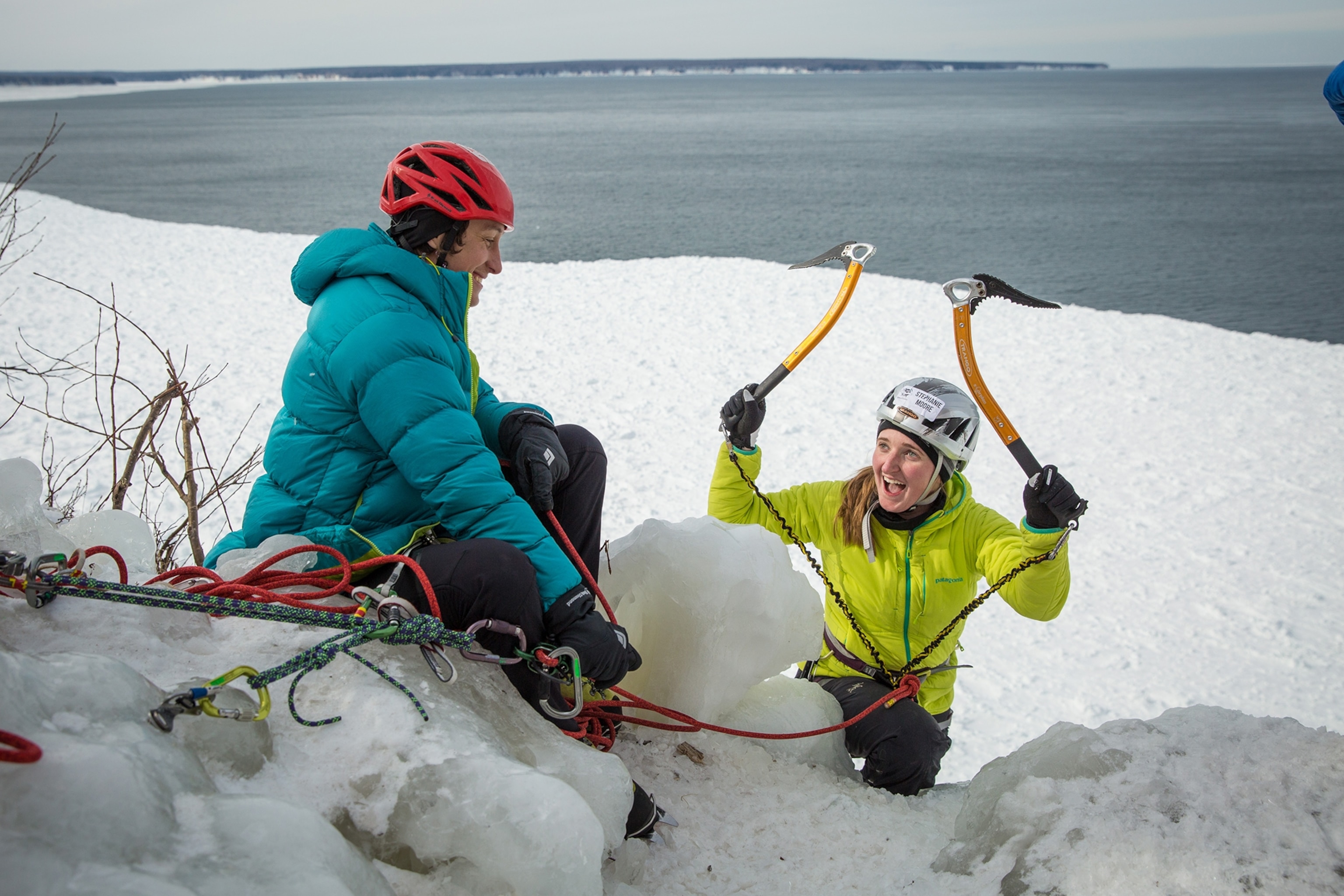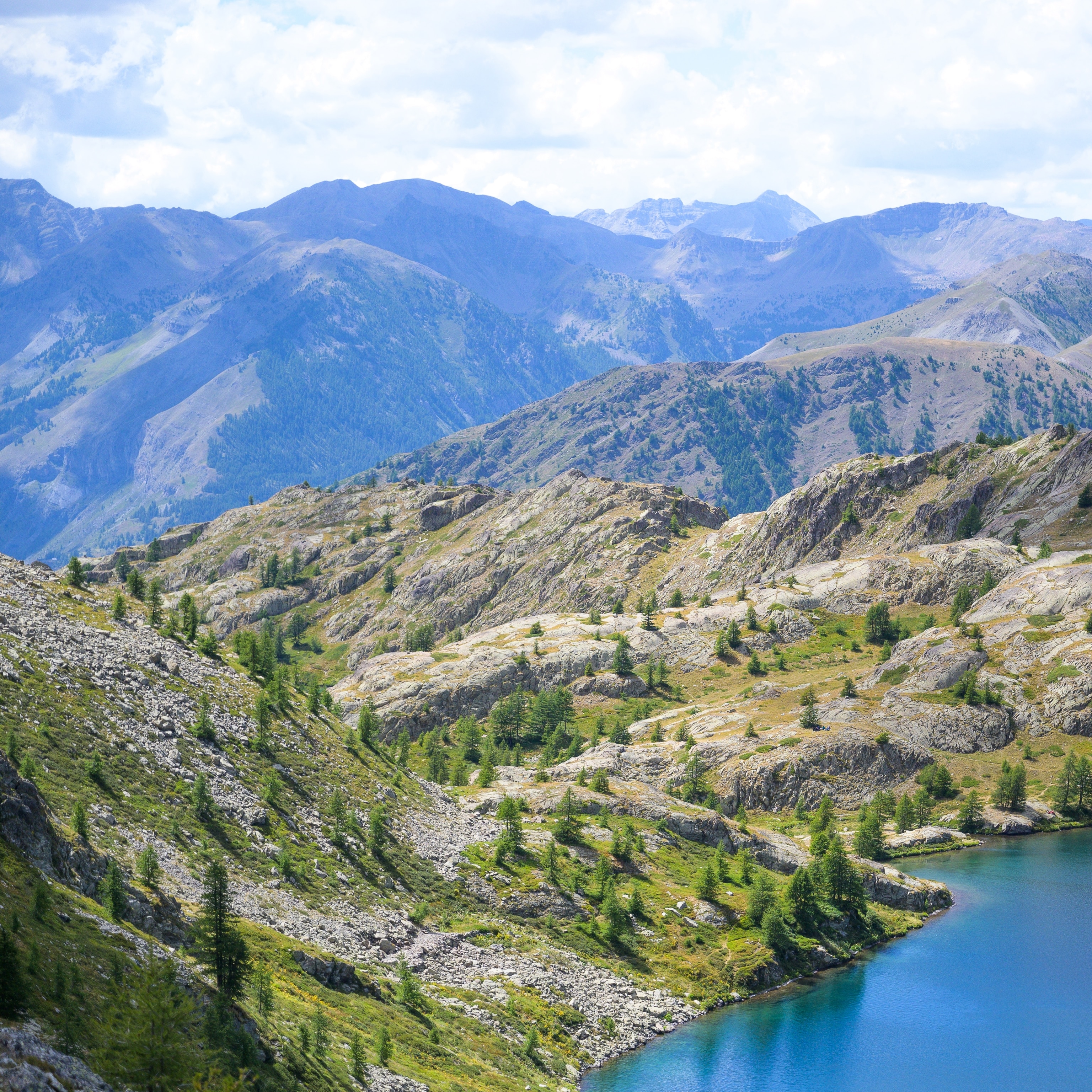
Aspiring ice climbers learn the ropes at a flurry of winter festivals
For the once-fringe sport, a growing number of events provides a gateway.
Despite the polar vortex swirling overhead, leaving temperatures in the single digits, a crowd of people began to form around 7:30 a.m. on Friday on the sidewalk of Main Street in North Conway, New Hampshire. The group grew from a few small clusters of people to a few dozen, then to more than a hundred, standing like a gigantic mismatched quilt of Gore-Tex, down, and ripstop nylon outside of the local outdoor shop and outfitter International Mountain Equipment.
At 8 a.m., the doors open, and the 26th Mount Washington Valley Ice Festival was underway.
That’s ice, as in ice climbing.
For many, the idea of swinging and kicking one’s way up a frozen waterfall sounds as crazy as cliff diving or traveling into low Earth orbit. But to a growing legion of enthusiasts, the niche sport of ice climbing is the perfect way to step outside the nine-to-five comfort zone of everyday life.
“It’s a bit of an adrenaline rush,” says Mary Scallion, a molecular biologist from Boston and second time participant in the New Hampshire event. “It’s really hard, and really frustrating when you’re doing it, but then you get the top, and you’re like–I did that. You come down and you’re like holy crap—I just climbed that.”
“It’s just such a different sport,” explains Bill Thompson, owner of Michigan-based Downwind Sports and organizer of the Michigan Ice Festival, one of the biggest and oldest ice-climbing events in the country. “There are unique sounds: water dripping, the ice fracturing. It takes you to unique environments–here on the Upper Peninsula above Lake Superior, it feels like you’re on a different planet.”
The breathless enthusiasm of new comers and veterans alike belies the fact that for the outdoor industry, events like this are critical to growing the customer base and driving business to backwater mountain towns.
“You can’t just go into a store, buy the gear, and go out on your own,” Thompson says. “You need to learn from somebody.”

A sport with deep roots revolutionized by technology
Although mountaineers had been climbing steep ice terrain in the Alps since the early 20th century, the sport of ice climbing didn’t catalyze until the early 1970s, when Scotsman Hamish MacInnes invented a radically new, drop-curved axe featuring a short-handled axe with a steeply angled pick designed specifically for to be swung above one’s head versus carried as a cane. With the latest rigid crampon designs, climbers were able to transition from laboriously chopping steps into the mountain to literally swinging and kicking their way up frozen waterfalls.
In 1978, MacInnes’ American pal Yvon Chouinard, who also tinkered with early ice axe designs, distilled the lessons and modern techniques they had experimented with using the new equipment into an influential book, Climbing Ice.
Henry Barber, another noted climber of the era, gave seminars with Chouinard around the country teaching the basics of how to use the new equipment. “We’d have 12, 18 people in a class, but those gatherings felt pretty isolated,” Barber recalls. “We couldn’t imagine three or four hundred people coming out for a single weekend.”
Throughout the 1980s, climbers in Europe and North America answered their call to action, significantly raising the standards and breadth for documented ice climbing in hotbeds such as the Canadian Rockies, the San Juan Mountains of Colorado, the Adirondacks Mountains of New York, and the White Mountains of New Hampshire.
“You basically had to be adopted by someone who was an experienced mentor,” recalls Dave Karl, an avid life-long ice climber and sales representative for equipment manufacturer Petzl. “More often than not, it was about being lucky enough to develop friendships with someone who would take you.”
In the early 1990s, the first commercial ice festivals began to immerge as a way to drive participation and bring new people into the sport.
A second technology revolution came about in the early 2000s, when a new breed of leashless ice tools and specialized boots were invented. At the top end of ice climbing and its close cousin, mixed climbing (climbing both ice and frozen rock), some proclaimed the death of the sport, noting that with the latest technology–some climbers were beginning affixing heel spurs to their boots, enabling them to bat hang indefinitely while resting—virtually anything was climbable.
That same spike in technology, however, opened the sport up to an even greater swath of weekend of adventurers. Eager to draw new customers to their region, local guide services or outdoor retail shops looked to get in on the action, and the number of ice festivals grew from three or four at the turn the century to at least 17 as of 2018.
“Ice climbing is accessible because of the tools,” Barber observes, who estimates that a typical ice climbing kit might costs $2,000 or more. “In rock climbing, you rarely get to the top because of the tools, but in ice climbing, you do. Generally athletic people can be coached to climb ice in a couple of weekends. You can’t do that in rock climbing.”
Take Brent Moody, who travelled from Tallahassee, Florida, to New Hampshire last weekend to try ice climbing for the first time. “I left home on Thursday, and I was ice climbing on Friday morning,” Moody says with a smile. “The first time I went it was harder then I thought, but I got a couple more runs in and each time, I got more confident… I can’t believe how much I learned.”
The business of socialized adventure
While the risks associated with ice climbing and the cost of all that specialized equipment create major obstacles for those curious about trying the sport, large scale ice festivals have flourished by breaking down those barriers.
Equipment manufacturers provide critical support by sending fleets of demo gear, sales representatives to explain the latest gadgets, and sponsor checks. Professional guides guarantee that the experience is fun and safe. After a day outside at the crag, participants are treated to an evening event featuring presentations from athletes and plenty of time socialize.
“Usually if I go climbing with my boyfriend, I might only get on one climb maybe two,” says Scallion, “but here I get the chance to do lots of different kinds climbing.”
“The value of these festivals is that people can actually get their hands on gear, they can talk to the pros and say “why do you use this?” they have access to the gear to use, and they have access to the gear to purchase,” says Bill Thompson.

“My business, we started out selling wind surfers in the 1970s, and it was the same thing: it’s a high-skill activity, you can’t just go out and buy a windsurfer from a mail order catalogue,” Thompson continues. “Now, we’re doing free demo rides on fat-tire bikes. It’s a pretty good gamble because, once you get someone outside riding around on single track, how can they not have fun? We try to do it with every sport in the store.”
Thompson’s strategy fits a growing national trend. According to a recent analysis of Bureau of Labor Statistics data published by the news platform Axios, the number of bricks-and-mortar retail stores selling hard goods like books, furniture, hardware, sporting goods, and shoes have all declined since 1970, while experience-based service businesses like restaurants, gyms, and nail salons are all growing.
“Our festival is within a day’s drive of Chicago, Detroit, Milwaukee, and so many other places–with social media, people start seeing these kinds of experiences and they want to go try it.”
“Over the past five to six years, we’ve tried to make it an overall experience - to make it both about the climbing and gatherings and events afterwards,” says Anne Skidmore of International Mountain Climbing School, the organizer of the Mount Washington Valley Ice Fest. “We want people to come and not only fall in love with the climbing but also the experience. We have a roster of world-class guides who are amazing teachers, and then they hear a presentation by a professional climber that evening talking about dealing with the same challenges they just faced. It taps into the experience they just had.”
Marketing has proved so effective that many festival organizers have been forced to cap participation. Says Thompson: “If everyone came back every year, there wouldn’t be enough ice.”
The Michigan Ice Festival runs from February 13 to 17, in Munising, Michigan, and the Valdez Ice Festival runs from February 15 to 18 in Valdez, Alaska.















